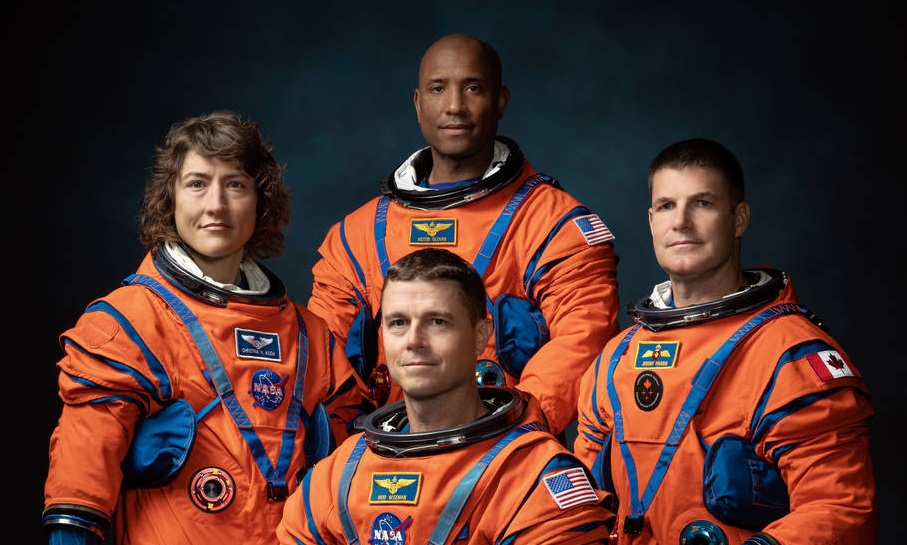
After much anticipation, NASA unveiled the astronauts that’ll be traveling around the Moon in the upcoming Artemis II lunar mission. In partnership with the Canadian Space Agency (CSA), NASA announced the astronaut’s identities at an event at Ellington Field near NASA Johnson Space Center in Houston, Texas today.
“The Artemis II crew represents thousands of people working tirelessly to bring us to the stars. This is their crew, this is our crew, this is humanity’s crew,” said NASA Administrator Bill Nelson. “NASA astronauts Reid Wiseman, Victor Glover, and Christina Hammock Koch, and CSA astronaut Jeremy Hansen, each has their own story, but, together, they represent our creed: E pluribus unum – out of many, one. Together, we are ushering in a new era of exploration for a new generation of star sailors and dreamers – the Artemis Generation.”
Wiseman will serve as Commander, Glover will serve as Pilot, Koch will serve as Mission Specialist 1, and Hansen will serve as Mission Specialist 2.
The approximately 10-day Artemis II flight test will launch on the agency’s powerful Space Launch System rocket, prove the Orion spacecraft’s life-support systems, and validate the capabilities and techniques needed for humans to live and work in deep space.
“We are going back to the Moon and Canada is at the center of this exciting journey,” said the Honorable François-Philippe Champagne, the minister responsible for the Canadian Space Agency. “Thanks to our longstanding collaboration with NASA, a Canadian astronaut will fly on this historic mission. On behalf of all Canadians, I want to congratulate Jeremy for being at the forefront of one of the most ambitious human endeavors ever undertaken. Canada’s participation in the Artemis program is not only a defining chapter of our history in space, but also a testament to the friendship and close partnership between our two nations.”
“For the first time in more than 50 years, these individuals – the Artemis II crew – will be the first humans to fly to the vicinity of the Moon. Among the crew are the first woman, first person of color, and first Canadian on a lunar mission, and all four astronauts will represent the best of humanity as they explore for the benefit of all,” said Director Vanessa Wyche, NASA Johnson. “This mission paves the way for the expansion of human deep space exploration and presents new opportunities for scientific discoveries, commercial, industry and academic partnerships and the Artemis Generation.”
If all goes to plan, the Artemis II mission will take off around November 2024. Crew members will be in the Orion spacecraft atop NASA’s Space Launch Rocket System. The journey, due to last about 10 days, will send the 4 astronauts out beyond the Moon, potentially to an area further out than any other human has traveled. After circling the Moon, the spacecraft will return to Earth, with a splashdown of the Orion capsule expected in the Pacific Ocean.
Following two Artemis test missions, Artemis III, currently planned for 2025, will mark humanity’s first return to the lunar surface in more than 50 years. NASA will make history by sending the first humans to explore the region near the lunar South Pole pending the successful completion of the Artemis II mission.